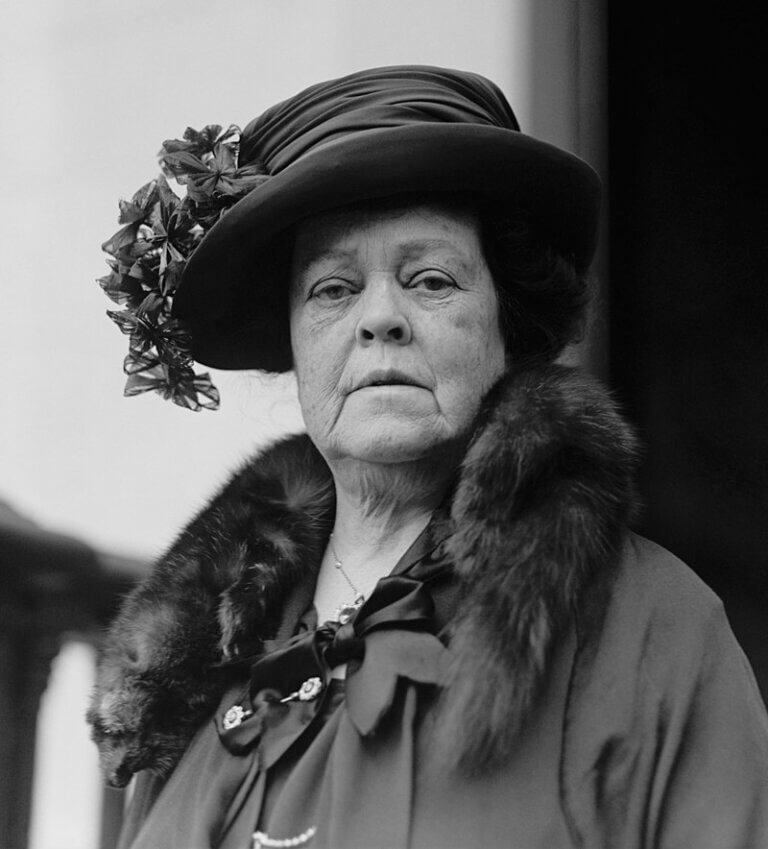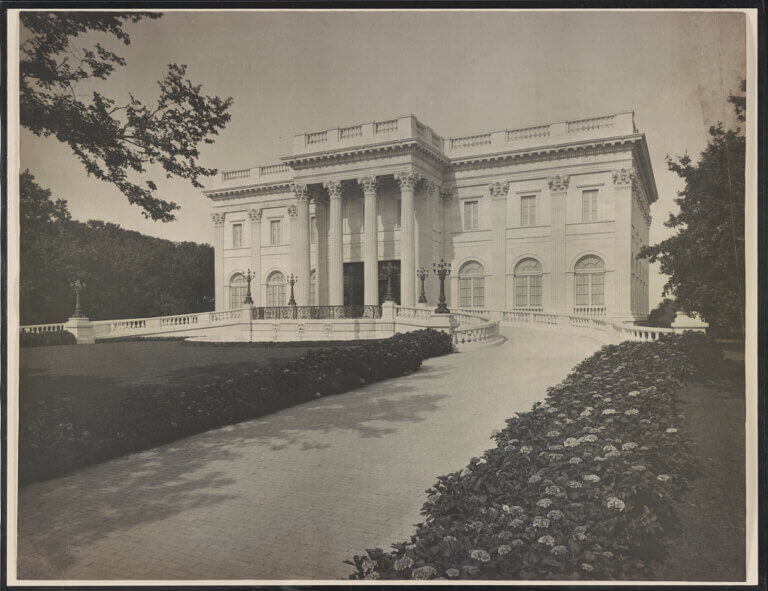MARBLE HOUSE
- Program
- Subject
- Location
- Lat/Long
- Grant Recipient
-
National Votes for Women Trail
-
House, People
- 596 Bellevue Ave, Newport, RI 02840, USA
- 41.462053, -71.305744
-
National Collaborative for Women's History Sites
MARBLE HOUSE
Inscription
MARBLE HOUSESUMMER HOME OF SUFFRAGIST
ALVA VANDERBILT BELMONT.
SITE OF NATIONAL WOMAN
SUFFRAGE CONFERENCES
IN 1909 AND 1914.
WILLIAM G. POMEROY FOUNDATION 2020
The Marble House was the summer home of Alva Vanderbilt Belmont, which served as the site of national woman suffrage conferences in 1909 and 1914. Belmont was an advocate for the women’s suffrage movement and she used the public interest in Marble House, as the house was called, to increase attention and understanding of the movement. The conferences also proved a valuable fundraising effort, as all the money generated from admissions was subsequently donated to the National Suffrage Association.
Belmont lived a fascinating and well-recorded life. In 1875 she married William K. Vanderbilt, who would inherit much of his father’s fortune following the latter’s death. With this money, the opulent Marble House was constructed, a process finished in 1892. Three years later she divorced her husband, defying societal expectations and norms of the time. Noting her break from those expectations, Belmont told a reporter from The Winnipeg Tribune in an article published July 21st, 1923 that she “was the first woman in America to dare to get a divorce from an influential man.” The Marble House remained in her possession following the divorce, and after the death of her next husband in 1908, Belmont became heavily involved in fighting for women’s right to vote. In 1909, Belmont created the Political Equality League, and in 1912 she led the Political Equality division of the Women’s Vote Parade in New York City. During this time, Belmont sought to use the grand Marble House to garner attention to the movement.
The Marble House was an especially beneficial location to host the conference. Prior to the conferences, newspapers from the time note the residence was typically kept guarded from the public eye despite the intrigue, seeing as the lower floor contained an art collection and “Gothic” Museum. Hoping to capitalize on the well-known interest in the Marble Home, Belmont opened the lower floors for visitors to explore in the hour leading up to the lectures, attracting architect and art aficionados from across the country. The added publicity only helped the cause. When describing the house, the New York Times noted in an article published August 20th, 1909:
On the right of the hall is a Gothic Museum, said to be the most beautiful Gothic room in the world. It contains a collection of priceless antiques, which Mrs. Belmont has collected from churches, cathedrals, and monasteries in her travels abroad.
The article also notes:
The lectures are being given by Mrs. Belmont for the purpose of arousing interest in the suffrage cause and in order to raise funds for the suffragists. All the money received for entrance fees will be turned over to the National Suffrage Association.
Belmont remained active in the campaign for women’s suffrage, helping found the National Woman’s Party and serving as its president until her death in 1933. In 2006 the Marble House was designated as a National Historic Landmark.


